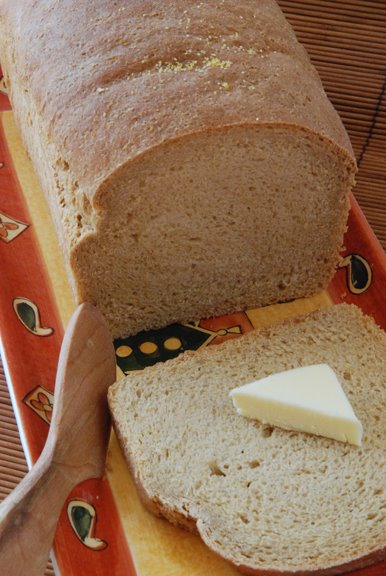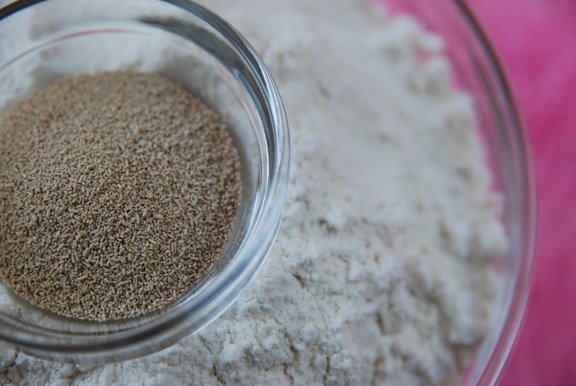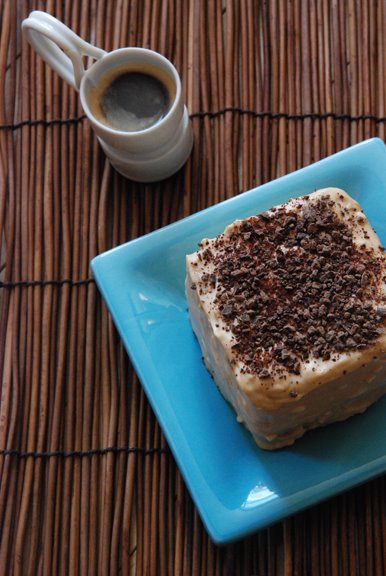.jpg)
"To dream of three aubergines is a sign of happiness."
— a Middle Eastern saying
I wish I'd had a dream about three aubergines instead of the one I had last night about driving a car and not being able to open my eyes to see the road! I'm nervous to ask for a dream interpretation on that one.
The next phase of the curriculum is all about menus. The first menu consists of the following:
• Aubergines Bayildi (Gratin of Stuffed Eggplant)
• Rouelles de Veau Bourgeoise (Veal Shanks with Pearl Onions and Mushrooms)
• Gratin de Fruits au Marasquin (Fruit Gratin with Maraschino Liqueur)
The challenge is to try to make all three courses in one cooking session, preferably in a three-hour time limit similar to the class setting. So, on Saturday I used more pots and pans in one cooking session than ever (matched only by the stack of dishes after Christmas dinner).
"The Imam fainted''First up is a Middle Eastern dish better known as Aubergines Imam Bayildi (pronounced AH-mahn by-yahl-deh), which means "the Imam fainted''.
Eggplant is notorious for requiring a lot of oil to pan-fry. If you try to add "just the usual amount", you’ll find yourself adding "just a bit more" and maybe even "just a bit more" again as the fruit (yes, eggplant is technically a fruit) soaks up the oil. Depending on the amount of oil you usually like to use, you may find that eggplant requires up to five times more!
This propensity to consume oil is a key part of Turkish folklore about how the dish got its name. The folk story centers on a village Imam who married a young woman. In those days, the father of the bride provided a dowry to the groom and in this case, since the Imam was a lover of fine food, the father offered twelve very large jars of olive oil. Now the wife turned out to be an excellent cook and her husband had her make his favorite dish, stuffed eggplant, every day. At this point, eggplants' ability to consume oil comes into play and after only twelve days the olive oil was gone. So, on the thirteenth day, the wife explained the problem to the Imam and told him that he needed to buy more. Shocked, the Imam fainted or translated to Turkish: Imam Bayildi. Turkish, though, is full of witty double meanings, and while some feel that the eggplant dish was so incredible that he fainted at the prospect of going without, others take the view that the Imam fainted because of the expense of the olive oil!
How to Make the Imam FaintWhile the eggplants have their splash of salt on a rack (to remove bitterness and moisture while adding flavor), shallots are softened in olive oil, along with a few crushed cloves of garlic. Then tomato paste and peeled, seeded and diced tomatoes are mixed in and heated to remove moisture, a third of it is cooked "until dry".
After the salt has performed its magic, the eggplants are scraped of their salt scrub and baked for 15 to 20 minutes to soften their flesh. The flesh is scraped out and cooked in a good amount of quality olive oil (preferably Turkish olive oil). After cooking the eggplant, the tomato mixture is added. Finally, some sliced basil is added for flavor and color.
The tomato/eggplant mixture is used to stuff the eggplants which are then topped with a slice of tomato and freshly grated cheese and finally dotted with butter. They are baked and browned for about 10 to 12 minutes and served on a bed of puréed tomatoes.
Now imagine this dish with allthe local ingredients. The eggplant, onions, garlic, tomatoes, and basil from your garden. The homemade olive oil is made from the olive tree in your backyard. And the cheese and butter from the local cow down the road. Though none of my ingredients were local, it was a tasty dish but I may have to visit Turkey to experience Aubergines Bayildi's faint-inducing attributes.
Recipe: Aubergines Bayildi (Gratin of Stuffed Eggplant)
Serves: 6
+mise+en+place.jpg)
Ingredients:
Chinese, Italian, regular and baby eggplants
3 small eggplants
Salt
5 tablespoons olive oil
3 shallots, chopped fine
4 cloves garlic, chopped fine
1 tablespoon tomato paste
1¾ pounds tomatoes, peeled, seeded, and diced
Freshly ground pepper
3 tablespoons finely sliced basil leaves
2 tomatoes
4 ounces grated Gruyère cheese (about 1 cup)
3 tablespoons unsalted butter
Basil leaves for garnish
Vegetable oil for baking sheet
You can find the recipe for Aubergines Bayildi (Gratin of Stuffed Eggplant) in the book
Le
Cordon Bleu at Home (affiliate link). To see how the rest of the Whisk Wednesdays group fared with their recipe, click
here (or check out the sidebar) and then click on each blogger!
Tasting NotesEach step of baking, sautéing, and then broiling brought out more and more flavor from the eggplant, tomato, garlic, and basil. Using the freshest and most local ingredients you can find would make this even better and playing around with the cheese would change the dish. Even adding some spices such as cinnamon and allspice or cumin and coriander, currants or walnuts would change it up a bit.
Links• Article:
Eggplant — A Mad Apple with a Dark Liaison• Bon Appetit:
How to Cook Eggplant Perfectly Every Time•
Don't Sweat The Aubergine
by Nicholas Clee
Next Class• Rouelles de Veau Bourgeoise (Veal Shanks with Pearl Onions and Mushrooms) pages 18-19
My Bucket List
• Taste Aubergine Imam Bayildi in Turkey.
. . . . . . . . . .
Running total: $1,287.18 + $16.84 = $1,304.02
($2.81 per serving)
Butter used so far: 11 pounds, 28.5 tablespoons
. . . . . . . . . .
::Whisk Wednesdays::
We're cooking our way through a cooking school curriculum using the Le Cordon Bleu at Home cookbook. The "classes" are based on the Le Cordon Bleu curriculum found online and used as a guideline. Not all the items in the curriculum are in the cookbook, but most are. Where the items are not in the book, we try to find a suitable substitution. Find out more here.
.jpg) A simple salad appetizer topped with slippery liver that's been sautéed lightly and finished with a little shallot-wine sauce thickened with crème fraîche. Nothing too tricky and everything is delicious…except the liver.
A simple salad appetizer topped with slippery liver that's been sautéed lightly and finished with a little shallot-wine sauce thickened with crème fraîche. Nothing too tricky and everything is delicious…except the liver.+mise+en+place.jpg)


.jpg)





.jpg)
.jpg)
+mise+en+place.jpg) Ingredients:
Ingredients:


.jpg)
+(2).jpg)
+mise+en+place.jpg)
.jpg)


.jpg)
.jpg)
+mise+en+place.jpg)









